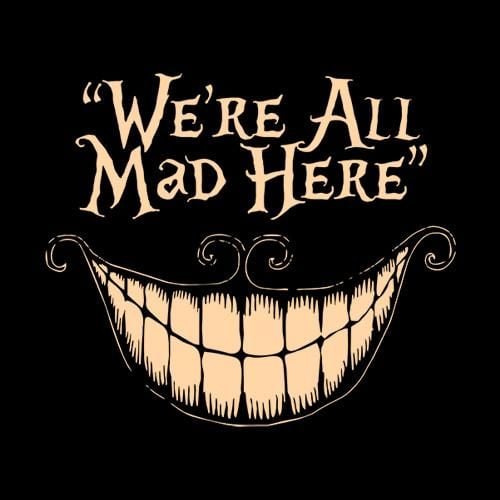cross-posted from: https://lemmy.world/post/2207898
Did you ever hear the tragedy of WebP The Efficient? I thought not. It’s not a story the GIF gang would tell you. It’s an image legend.
WebP was a new format of pictures, so efficient and so lightweight, it could use modern compression to influence the web pages to actually load faster…
It had such a knowledge of the user’s needs that it could even keep transparency and animations from dying.
The power of modern computing is a pathway to many abilities some consider to be unnatural.
It became so widespread… The only thing we had to be afraid of, was people insisting on using formats from the 90’s, which eventually, of course, they did.
Unfortunately, we didn’t teach the noobs everything we knew about compression, then the noobs killed the format by converting it to PNG and sharing that.
Ironic. We could save the web from being too slow, but not from the users.
The only problem I have with .webp and .webm is that not that many applications support them and need to be converted first.
This. Many viewers still dont support it for some reason so despite all technical glory, effectively its often mostly a nuisance. Cmp ogg/vorbis and possibly countless other examples. Adoption is everything for web formats.
No, there’s also the problem that they’re Google developed formats. I think an increasing number of us want to be done with Google as much as possible, and there are good alternatives that aren’t getting the support they need right now to give us that freedom.
I understand that but we really fucking need to be moving from jpegif. MP3 and MPEG2 were commercial formats too (actually so was jpeg iirc?) and look where they got us. We just really need someone to get the ball rolling to start using newer formats.
JPEG has always been royalty-free. It just supported arithmetic coding, which at the time was patented. Arithmetic coded JPEGs are exceedingly rare & you’re unlikely to run into any on the Web.
I hate Google too, but if they are proper open specification formats and aren’t encumbered by patents, why does it matter that Google created them? Open format is open format regardless of its creator.
Do these formats have some DRM capability or other nefarious reason to avoid them or is it just because they were created by someone we don’t like?
What applications are those?
Why are so many people using image viewers from 1993? Nothing against nostalgia, but…
Discord doesn’t support webp, that’s probably one of the biggest ones.
Discord profits from big inefficient formats so you buy nitro
Dammit
Also Google Voice cannot attach webps. Literally the same company that came up with it. I gotta convert to send memes and photos to my boomer parents still using text for everything.
Discord does support WebP.
For me, it’s not image viewers, but websites that take photo uploads. None of them that I’ve ever used have supported webp, so I always have to convert to png or jpg.
This. What the hell is up with that?
At least don’t convert photos to png
 Ofcourse I know him. He’s me
Ofcourse I know him. He’s meKill him. Kill him now.
Seriously… Please don’t. Or at least don’t ever share that shit back to the web. It gets even worse when people then rename the png to jpg and it’s a whole fucking mess. I’ve been trying to figure out where the hell all those bloated hi-res pngs all over the web come from, until I stumbled upon this answer.
Just download an updated app that can read webp for crying out loud. Do people convert x265 to QuickTime too?
Besides, everywhere where I’ve encountered webp in the wild, the image url has something like ?format=webp at the end, so you can just delete that and get the original, if you really have to.
It was on by default for me, but I’m also not downloading pictures to repost so it’s fine.
What client is that?
Liftoff
Good damn it…
I’ve got jerboa, thunder, wefwef… And now liftoff.
It’s like I’m going for the fucking infinity gauntlet
Thanks!
Edit: STOP FUELING MY ADDICTION :'(

And that’s just the FOSS options
Oof you’re further down the rabbit hole I see :']
Where can I get Slide for Lemmy? Obtainium cannot find it.
Thanks.
Also try Sync for lemmy and Connect
Haha I have the same issue with mastodon and matrix apps
Liftoff
Webp is just one more instace of Google trying to own the modern web.
Give me JPEG XL or give me death, motherfuckers.
I prefer AVIF, it has significantly better browser support, and since AV1 is getting all the hardware support avif will benefit from this too.
deleted by creator
Actually everything started lime that with a big company open source … until it wasn’t anyone …
Actually everything started like that with big companies that don’t do evil … open source … until it wasn’t anyone …
You cannot really un-opensource software very well.
Yeah, until it’s not anymore. No reason to trust google, especially these days.
I’m still mad over the JPEG xl drama
Hold up: what drama? I thought everyone was just dragging their feet on implementing compatibility for it
Since Chrome decided to cancel it a bunch of other software has implemented it
JPEG XL, the one true king.
Compatibility be damned.
Anakin Skywalker : I’ve just learned a terrible truth. I think this Chancellor Palpatine meme is a jpeg.
Mace Windu : [suprised] A jpeg?
Anakin Skywalker : Yes, the one we’ve been looking for.
Mace Windu : How do you know this?
Anakin Skywalker : I saved the file and it’s a jpeg, not a webp.
Mace Windu : Are you sure?
Anakin Skywalker : Absolutely.
If you look into it a bit more, the resistance around WebP is mainly because it has some crippling weaknesses. I did some visual quality testing ( here, here & here ) & I (as well as many others independently) have found that for photographic images, WebP & JPEG are equals, & Google’s messaging that lossy WebP meaningfully improves upon JPEG for general visual quality per bit is misleading. That being said, WebP has some important strengths that are not often acknowledged. In addition to transparency & (really good) animation support, it also has:
- a lossless mode that often outperforms PNG
- great nonphotographic compression (though AVIF outperforms it here)
- decent compression of photographic sources at lower fidelity, where it actually starts to beat JPEG by a good amount
- Totally royalty free
WebP’s main weaknesses are:
- not better than JPEG for photographic images at useful fidelity
- Confusing messaging from Google, may have led to slow adoption
- Based on a video codec, so no progressive decode (even JPEG has this)
- limited to 8 BPC (lossy & lossless)
- superseded by JPEG-XL & AVIF, which are both pretty much better at everything
JPEG-XL in particular is very promising. It faces hostility from Google but has an incredible breadth of features & strong compression performance, as well as Apple ecosystem-wide adoption on the way with the upcoming versions of macOS, iOS, ipadOS, etc. It is also royalty free. AVIF is better than WebP at everything except lossless, too.
Feeling any which way about WebP, it is still a shame to see it transcoded to PNG. All that wasted potential …
Jpeg is not what makes the Web slow. The dozens of requests to Google and all the add services and then the add videos.
When an addblocker makes the page loads so much faster, webp is definitely not what will save Internet.
Politely disagreeing, of course the requests made to google services and other statics services make the website slower but when you compare it with uncompressed image formats its almost as nothing. Of course those requests are unnecessary but you just cant compare them with images on slowing down the web.
Did you call JPEG an uncompressed image format?
The only thing I don’t like about webp is it can either be lossy or lossless, with png and jpg you know if it’s lossless or not.
Unfortunately there are lots of jpegs resaved or screenshotted to png out there, so that doesn’t help if you don’t know the history of the file.
Heck, there are even lots such pngs with their extension changed to jpg, which you might not notice unless you check for details or your image viewer differentiates between various formats.
This whole thing has been a mystery for me for months and I couldn’t I figure out where do such botched files come from, until I realised it’s probably because people can’t handle webps and so are making a mess of things.
Webp… For web pictures. Then why are there webp files on my non web harddrives? Give me PNG, SVG, JPEG and GIFs. Not this ugly Google shit. I never liked it in the first place. And take your shitty webm with you.
They are smaller and higher quality, why use archaeic formats?
Who needs smaller files? We have compressed data streams since ever. Also we use “archaic” formats because the web is built on backwards compatibility.
Also higher quality? You can’t get higher than lossless (PNG, TIFF) anyway. And JPEGs are good enough for photos. Also you know what kind of picture you have by it’s minetype or file extension. With webp? Well it’s a box of chocolate.
While I agree that unique file extensions for each image category are very convenient, this is overall an absurd take.
You can’t get higher than lossless (PNG, TIFF) anyway
PNGs have horrendous compression. Like, it’s notorious for that.
And JPEGs are good enough for photos.
This is just wrong. Modern formats have astonishingly better reproduction, especially for images of things like text. Some formats are also designed to mitigate artifacts caused by re-saving. No more “too much JPEG”.
All that being said, I don’t think WebP is the answer. JPEG-XL is better in so many ways, and if we’re going to make a switch, it should be to a format that is definitively the best option.
Webp… For web pictures. Then why are there webp files on my non web harddrives? Give me PNG
You know what the N in PNG stands for?
Yes, my harddrives are in my network.
I’m against using a Google OS (Android, Chrome OS), to browse on a Google regulated web (Manifest V3), based on a Google protocol (Protobuf) loading pages via Google proxies (Google AMP) filled with Google Ads displayed using a Google format (webp, webm), while everything is recorded and fingerprinted to update my Google Ad Profile.
No, thank you very much!
More open formats, more open Internet! Down with Google!
Shit like this is why people look down on the Fediverse. You’re in /c/Memes, not your usual fedora wearing, neckbeard vegan channel.
deleted by creator
They say that their format is open. In reality, it’s them who exclusively control the definition and further evolution of the format.
For as long as they continue to support and release code for open formats, there’s hardly an argument here.
That’s exactly the issue. We are dependent on Google’s goodwill and if they decide to scrap it or collect license fees for it we’re shit out of luck.
It’s still a godsend for large comic book archives. Thx comicrack for supporting this wicked new format since August 2013!
edit: there’s also a relatively new plugin for avif and jpegxl support.
I’ve never heard anyone complain about webp before. What’s the problem?
Waited ages for webp to have great browser support and it finally does. Plenty of image compression services let you choose a webp output which is a great space saver :)
Cant seem to open it with shit after I save it
That sounds like a you problem
Well if you’re trying to open pictures with shit…
deleted by creator
deleted by creator
Ios can’t play webm. can it show webp?
People say it does.


















